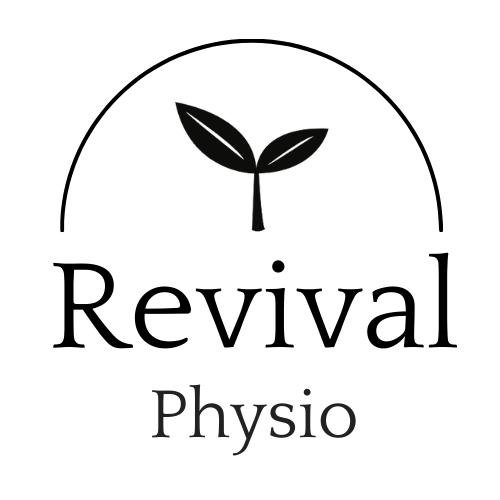Pelvic Floor Physiotherapy to Treat Urinary Incontinence
Stress Incontinence:
*Peeing when you cough, sneeze or laugh!
Pelvic Floor Muscle Weakness: Weakness in the pelvic floor muscles, which support the pelvic organs including the bladder and urethra, is a leading cause of stress incontinence. Factors such as aging, childbirth, and hormonal changes can contribute to muscle weakness.
Childbirth: Vaginal childbirth, especially multiple deliveries or traumatic births, can lead to stretching and weakening of the pelvic floor muscles and connective tissues, increasing the risk of stress incontinence.
Menopause: During menopause, a decline in estrogen levels can result in changes to the pelvic floor tissues, making them less elastic and more prone to weakness.
Aging: The natural aging process can lead to a gradual decline in muscle tone and elasticity in the pelvic floor, increasing the risk of stress incontinence.
Chronic Coughing: Conditions such as chronic bronchitis or asthma that lead to persistent coughing can increase intra-abdominal pressure and contribute to stress incontinence.
Heavy Lifting or Straining: Activities that involve heavy lifting or straining, especially if done regularly, can place stress on the pelvic floor muscles and contribute to weakness.
Genetic Factors: Some individuals may have a genetic predisposition to weaker pelvic floor muscles, making them more susceptible to stress incontinence.
Connective Tissue Disorders: Conditions that affect the connective tissues in the pelvic area, such as Ehlers-Danlos syndrome or Marfan syndrome, may contribute to pelvic floor dysfunction.
Prior Pelvic Surgery: Certain pelvic surgeries, particularly those involving the bladder or reproductive organs, may impact the integrity and function of the pelvic floor, leading to stress incontinence.
Hormonal Changes: Fluctuations in hormonal levels, such as those occurring during pregnancy or as a result of hormonal therapy, can affect the strength and elasticity of pelvic floor tissues.
Urge Incontinence
*Going to the bathroom more often then every 2 hours
Pelvic Floor Muscle Tension: Elevated tension or hypertonicity in the pelvic floor muscles can contribute to urge incontinence. Chronic muscle tension may lead to an inability of the muscles to relax properly during bladder filling, causing an increased urge to urinate.
Poor Pelvic Floor Muscle Coordination: Dysfunction in the coordination between the pelvic floor muscles and the detrusor muscle (bladder muscle) can result in an overactive bladder. Pelvic floor physiotherapists work to improve the timing and coordination of muscle contractions and relaxations.
Pelvic Organ Prolapse: Pelvic organ prolapse, where pelvic organs descend into or beyond the vaginal canal, can impact bladder function and contribute to urge incontinence.
Scar Tissue or Adhesions: Scar tissue or adhesions in the pelvic floor region, which may result from surgeries or trauma, can affect the normal movement and function of the pelvic floor muscles, leading to urge incontinence.
Posture and Alignment Issues: Poor posture or misalignment of the pelvis can affect the function of the pelvic floor muscles and contribute to symptoms of urge incontinence.
Hormonal Changes: Hormonal fluctuations, particularly during menopause, can impact the tone and elasticity of the pelvic floor muscles, influencing bladder function.
Pelvic Floor Weakness: While tension can contribute to urge incontinence, weakness in the pelvic floor muscles can also play a role. In some cases, a combination of tension and weakness may be present.
Overtraining of Pelvic Floor Muscles: Overtraining or excessive engagement of the pelvic floor muscles, such as in some forms of exercise, can lead to increased tension and contribute to urge incontinence.
Emotional Stress and Anxiety: Pelvic floor physiotherapists recognize the connection between emotional stress, anxiety, and pelvic floor function. Emotional factors may contribute to increased tension in the pelvic floor muscles.
How Pelvic Floor Physiotherapy Can Help With:
Stress Incontinence:
Pelvic Floor Muscle Training: Pelvic floor physiotherapists teach specific exercises to strengthen the pelvic floor muscles. Strengthening these muscles helps provide better support to the bladder and urethra, reducing the risk of leakage during activities that increase intra-abdominal pressure.
Biofeedback: Biofeedback techniques are used to help individuals gain awareness and control over their pelvic floor muscles. This involves visual or auditory feedback to help patients understand and optimize muscle contractions and relaxations.
Postural Correction: Physiotherapists assess and address posture-related issues that may contribute to stress incontinence. Improving overall posture can reduce unnecessary pressure on the pelvic floor.
Functional Training: Pelvic floor physiotherapists incorporate functional exercises that mimic daily activities, helping individuals build strength and coordination for tasks that may trigger stress incontinence.
Bladder Training: Education on bladder habits and training techniques to gradually increase the interval between voids helps manage urinary urgency and reduce the impact of stress incontinence.
Manual Therapy: Hands-on techniques, such as myofascial release or trigger point therapy, may be used to address muscle tightness or restrictions that contribute to pelvic floor dysfunction.
Urge Incontinence:
Pelvic Floor Relaxation Techniques: For individuals with pelvic floor muscle tension, physiotherapists teach relaxation techniques to release tension and improve the ability of the pelvic floor muscles to relax during bladder filling.
Bladder Retraining: Physiotherapists guide individuals in implementing bladder retraining techniques to gradually increase the time between urges and improve bladder capacity.
Behavioral Strategies: Education on lifestyle modifications, such as managing fluid intake, avoiding irritants, and establishing a regular voiding schedule, helps individuals better control their bladder and reduce episodes of urge incontinence.
Biofeedback for Muscle Coordination: Biofeedback may be used to enhance the coordination between the pelvic floor muscles and the detrusor muscle, improving overall bladder control.
Functional Exercises: Targeted exercises to improve pelvic floor muscle coordination and support can be incorporated to address functional aspects of urge incontinence.
Sensory Retraining: Techniques to improve awareness of bladder sensations and differentiate between true urgency and false signals contribute to better control over bladder function.
Postural Assessment: Addressing any postural or musculoskeletal factors that may contribute to urge incontinence is part of the comprehensive assessment and treatment plan.
Education on Triggers: Physiotherapists educate individuals about potential triggers for urge incontinence and provide strategies to minimize these triggers in daily life.


